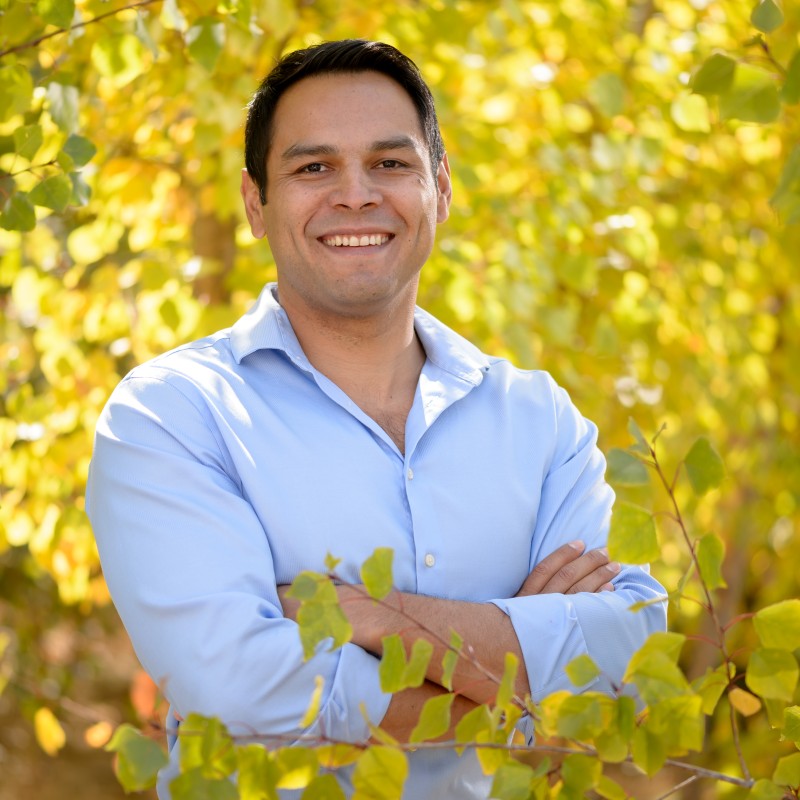California is scaling up its grid infrastructure at an unprecedented level to tap into renewable energy sources and power homes, buildings and millions of zero-emission vehicles hitting the road. The buildout is putting more scrutiny on the role of the natural and working lands sector in combating climate change and creating a need for more collaboration building among rural counties as farmland is repurposed for energy needs.
A boom in solar and wind farms has led to roughly 35,000 megawatts of clean electricity currently available. But the state needs 148,000 more to reach its goal of 100% clean electricity by 2045, according to the California Energy Commission (CEC). That means boosting wind and solar capacity fourfold. With the higher penetration of renewable sources into the energy market, the commission is stressing the increasingly urgent need to anticipate and minimize any environmental and land use impacts.
The key strategy for doing so is through Senate Bill 100. The 2018 legislation established the 2045 goal and also tasked CEC, in collaboration with the Air Resources Board and the Public Utilities Commission, to report back to the Legislature on their progress every four years.
CEC held the first stakeholder workshop last week to inform its 2025 report, which is due at the end of this year. The process is examining the potential impacts to agricultural resources, ecosystems, tribes and environmental justice.
The effort coincides with CARB implementing changes to its climate blueprint for its regulatory programs, known as the AB 32 Climate Scoping Plan. The 2022 update elevates carbon neutrality as the central focus and puts more scrutiny on natural and working lands for greenhouse gas emissions as well as the opportunities for sequestering carbon.
 Adam Moreno, Air Resources Board
Adam Moreno, Air Resources BoardThe plan recommends that every year the state restore more than two million acres of forests and grasslands and convert 150,000 acres of agricultural lands to regenerative and conservation practices. It also calls for expanding wetland conservation in the Sacramento-San Joaquin Delta another 60,000 acres by 2045.
In 2022 the Legislature passed a measure by Assemblymember Robert Rivas of Salinas that requires the California Natural Resources Agency to set sequestration targets for 2030, 2038 and 2045. Assembly Bill 1757 also mandates that the state track and report on the impact of management and land use changes on natural and working lands.
CARB is translating AB 1757 and the scoping plan update into actions to keep carbon in the ground.
“CARB’s objective is not to maximize carbon sequestration and storage, but rather to enhance the health and resilience of ecosystems and communities to create long-term sustainable and durable carbon stocks,” explained Adam Moreno, who manages nature-based strategies at CARB. “Many of these levels of action are double or even an order of magnitude greater than the level of action that we are currently accomplishing.”
Some of the lower hanging fruit is to create defensible spaces around homes and communities, reduce wildfire fuels and restore wetlands. But it gets much more challenging when promoting conservation on working lands, which already face strong pressure for urban development.
It’s easy to be “in the know” about what’s happening in Washington, D.C. and across the coast. Sign up for a FREE month of Agri-Pulse news! Simply click here.
And the goalposts will continue to move. CARB estimates climate change is going cause the sector to lose carbon no matter the state actions. Moreno stressed that the loss—as well as the negative implications for public health, the environment and economies—can be reduced through aggressive climate action.
“Our current choice is not if we are going to lose carbon or not, but how we are going to lose that carbon,” he said. “Whether that be through catastrophic wildfires, drought-induced mortality and poor land use planning or through fuel reduction treatments, biomass utilization and conserving our landscapes.”
The state is prioritizing developed and degraded lands for the infrastructure buildout to conserve ecosystems. But agencies are unaware if enough space is actually available to meet the need. It also puts more pressure on integrating the infrastructure in and around communities and within productive agricultural operations, he explained.
Erica Brand, a CEC project manager for land use and infrastructure planning, added that the state has launched a program at the California Department of Conservation for repurposing farmland that will be fallowed under the Sustainable Groundwater Management Act. It focuses on multibenefit uses that conserve water for ecosystems and communities. But the department is considering expanding the options to include the development of clean energy, she said.
The administration is working with stakeholders and municipalities in the San Joaquin Valley to build on local knowledge and scale up energy production while balancing uses like agriculture, groundwater recharge and rewilding lands, according to Nathaniel Roth, chief scientific and data advisor at the department.
“Much of the land that's likely to be used to meet SB 100 requirements is agricultural land,” he said. “At the same time, we know that the footprint of agriculture is going to be changing… We have a really shared interest to look towards the least viable lands for agriculture to both reduce the water demand and move forward on renewable energy and other publicly benefiting opportunities.”
Yet such widescale development requires careful engagement with rural stakeholders, cautioned John Kennedy, senior policy advocate at the Rural County Representatives of California.
“The more positive interactions the locals have with developers and developing better projects, the easier it's going to be in the long run to achieve the state's goals,” he said.
For more news, go to Agri-Pulse.com.


